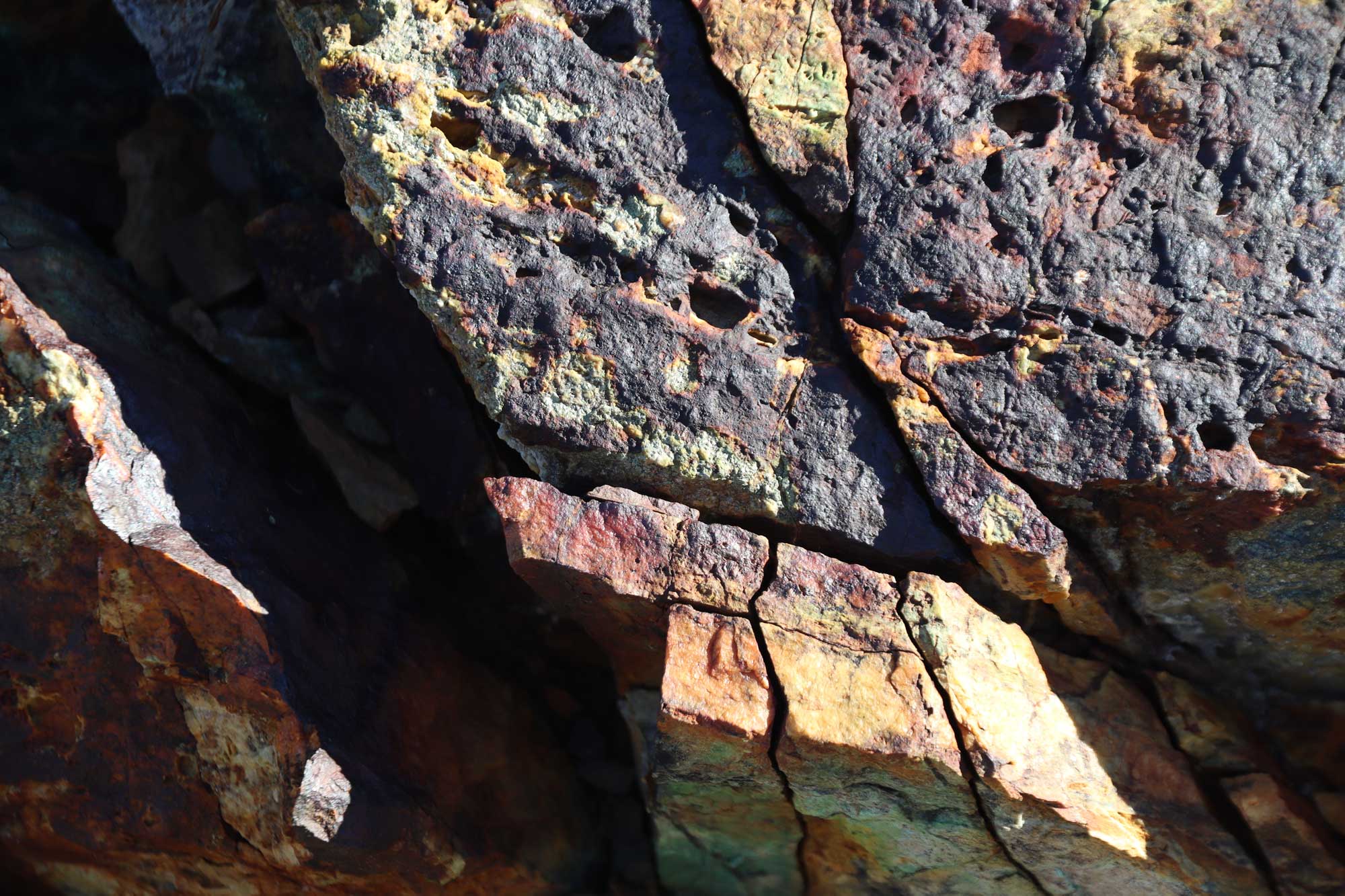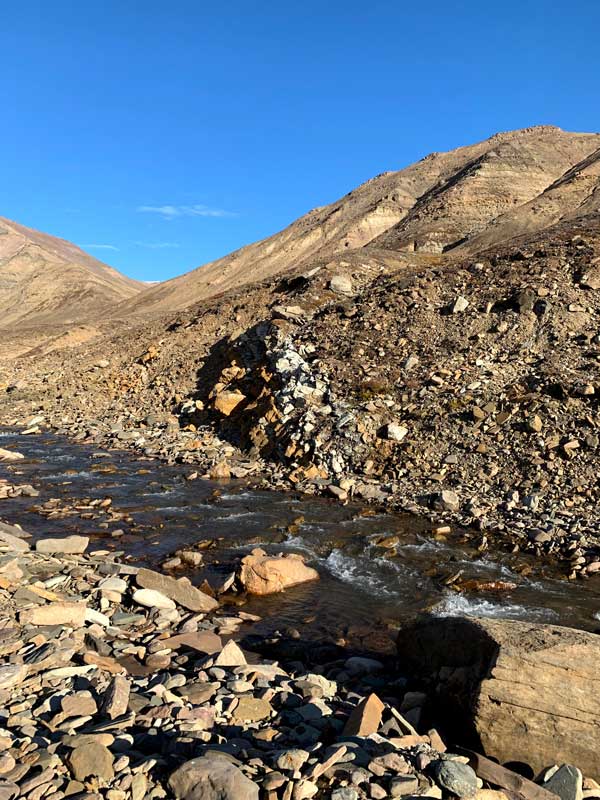The Mestersvig Project contains the historic Blyklippen Mine that produced a total 545,000 tons of ore at 9.3% lead and 9.9% zinc between 1956-1962, and is located on the east coast of Greenland only 5 km from the Mestersvig military base. There are multiple mineralised occurrences that remain un-tested by drilling, and 13 km of un-tested strike length that extends from the Blyklippen Mine.
Mestersvig Geology
Local geology is dominated by Carboniferous, Permian and Triassic sediments intruded by Palaeogene dolerite sills and dykes. The area is bordered by the Palaeogene Werner Bjerge alkaline complex to the south, and a major regional fault to the west, beyond which sits the Caledonian fold belt. The Mestersvig graben is the most conspicuous feature of the project area, which occurs in a 15-20 km-long anticlinal fold structure amongst widespread faulting. The graben is 4 km wide and 12 km long, with the western graben fault being the host to the Blyklippen Mine.
Mestersvig: Mineralisation
Mineralisation occurs as fault controlled epithermal lead-zinc veins with accessory silver and copper. Mineralisation is hosted within quartz veins that range in thickness from 2-50 m, from surface to unknown depth. Veins are mostly associated with the border faults of the Mestersvig graben, but also occur distally and are widespread throughout the project area. Ore minerals are typically massive galena and sphalerite, with minor chalcopyrite and barite.
Mestersvig: Work Conducted
Surface Sampling
Samples collected by the company grade up to >10.0% Pb, 0.8% Zn, 7.0% Cu & 273 g/t Ag
Diamond Drilling
Samples collected by the company grade up to >10.0% Pb, 0.8% Zn, 7.0% Cu & 273 g/t Ag
Geophysical Survey
- Ground-borne gravity survey
- Regional airborne magnetics and electromagnetics (EM)
Hyperspectral Mapping
High-resolution hyperspectral data was acquired in 2020
Mestersvig: Logistics
Access to site is via aircraft on an existing airstrip at the Mestersvig military base, or ship. Internal movements on site are by foot, vehicle or helicopter




